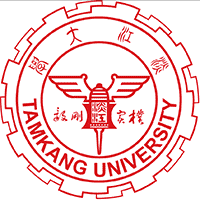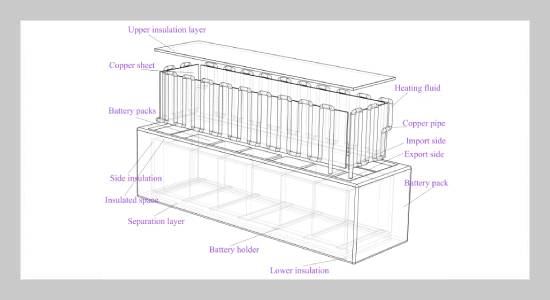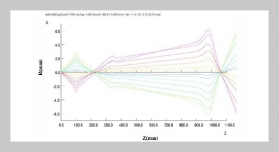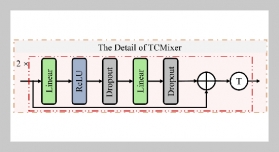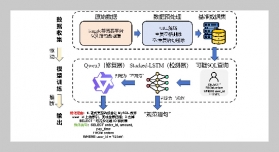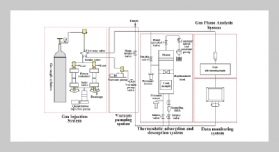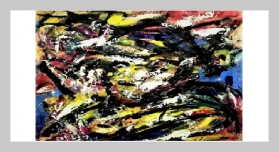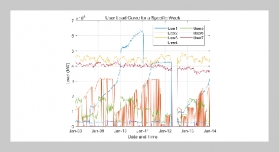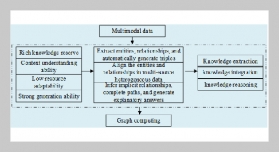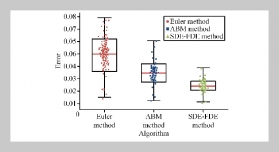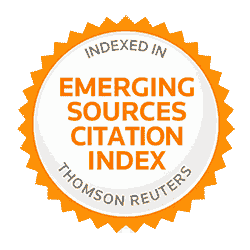- [1] C. government website. New energy vehicles are a strategic choice for the high-quality development of China’s automobile industry. Accessed: 2025-06-07. 2023.
- [2] F. Yi, J. E, B. Zhang, H. Zuo, K. Wei, J. Chen, H. Zhu, H. Zhu, and Y. Deng, (2022) “Effects analysis on heat dissipation characteristics of lithium-ion battery thermal management system under the synergism of phase change material and liquid cooling method" Renewable Energy 181: 472–489. DOI: 10.1016/j.renene.2021.09.073.
- [3] L. Zhiguo, Z. Chenning, L. Junqiu, F. Guangchong, and L. Zhewei, (2013) “Research on low-temperature performance of lithium-ion batteries for electric vehicles" Automotive Engineering 35(10): 927–933. DOI: 10.19562/j.chinasae.qcgc.2013.10.014.
- [4] L. Rui, S. Liping, and Q. Weiwei, (2024) “Characterization of lithium battery discharge under low temperature" Journal of Power Supply 22(S1): 98–104. DOI: 10.13234/j.issn.2095-2805.2024.S1.98.
- [5] Y. Qin, J. Du, L. Lu, M. Gao, F. Haase, J. Li, and M. Ouyang, (2020) “A rapid lithium-ion battery heating method based on bidirectional pulsed current: Heating effect and impact on battery life" Applied Energy 280: 115957. DOI: 10.1016/j.apenergy.2020.115957.
- [6] J.-H. Seo, M. S. Patil, C.-P. Cho, and M.-Y. Lee, (2018) “Heat transfer characteristics of the integrated heating system for cabin and battery of an electric vehicle under cold weather conditions" International Journal of Heat and Mass Transfer 117: 80–94. DOI: 10.1016/j.ijheatmasstransfer.2017.10.007.
- [7] Y. Lv, X. Yang, G. Zhang, and X. Li, (2019)“Experimental research on the effective heating strategies for a phase change material based power battery module" International Journal of Heat and Mass Transfer 128: 392 400. DOI: 10.1016/j.ijheatmasstransfer.2018.07.037.
- [8] J. Jo, J. Kim, and S. J. Kim, (2019) “Experimental investigations of heat transfer mechanisms of a pulsating heat pipe" Energy Conversion and Management 181: 331–341. DOI: 10.1016/j.enconman.2018.12.027.
- [9] J. Jiang, H. Ruan, B. Sun, L. Wang, W. Gao, and W. Zhang, (2018) “A low-temperature internal heating strategy without lifetime reduction for large-size automotive lithium-ion battery pack" Applied Energy 230: 257 266. DOI: 10.1016/j.apenergy.2018.08.070.
- [10] D. Huang, Z. Chen, and S. Zhou, (2022) “Self-powered heating strategy for lithium-ion battery pack applied in extremely cold climates" Energy 239: 122095. DOI: 10.1016/j.energy.2021.122095.
- [11] C.-Y. Wang, G. Zhang, S. Ge, T. Xu, Y. Ji, X.-G. Yang, and Y. Leng, (2016) “Lithium-ion battery structure that self-heats at low temperatures" Nature 529(7587): 515 518. DOI: 10.1038/nature16502.
- [12] F. Cai, H. Chang, Z. Yang, C. Duan, and Z. Tu, (2022) “Arapid self-heating strategy of lithium-ion battery at low temperatures based on bidirectional pulse current without external power" Journal of Power Sources 549: 232138. DOI: 10.1016/j.jpowsour.2022.232138.
- [13] A. Kan, N. Zheng, W. Zhu, D. Cao, and W. Wang, (2022) “Innovation and development of vacuum insulation panels in China: A state-of-the-art review" Journal of Building Engineering 48: 103937. DOI: 10.1016/j.jobe.2021.103937.
- [14] Y. Bo, L. Feng, and L. Bing, (2020) “Preparation and low-temperature performance monitoring of ceramic diaphragm lithium batteries" Chinese Journal of Power Sources 44(2): 165–167, 234. DOI: 10.3969/j.issn.1002-087X.2020.02.006.
- [15] C. Liu, D. Xu, J. Weng, S. Zhou, W. Li, Y. Wan, S. Jiang, D. Zhou, J. Wang, and Q. Huang, (2020) “Phase Change Materials Application in Battery Thermal Management System: A Review" Materials 13(20): DOI: 10.3390/ma13204622.
- [16] S. Zhang, D. Feng, L. Shi, L. Wang, Y. Jin, L. Tian, Z. Li, G. Wang, L. Zhao, and Y. Yan, (2021) “A review of phase change heat transfer in shape-stabilized phase change materials (ss-PCMs) based on porous supports for thermal energy storage" Renewable and Sustainable Energy Reviews 135: 110127. DOI: 10.1016/j.rser.2020.110127.
- [17] Z. Chen and F. Zhang, (2024) “Numerical study of the phase change material and heating plates coupled battery thermal management in low temperature environment" Journal of Energy Storage 84: 110935. DOI: 10.1016/j.est.2024.110935.
- [18] G. Cheng, Z. Wang, T. Tang, and Y. He, (2024) “A novel double-layer lithium-ion battery thermal management system based on composite PCM optimized heat dissipation and preservation in cold climates" Journal of Energy Storage 85: 110992. DOI: 10.1016/j.est.2024.110992.
- [19] B. Xu, F. Xia, Y.-l. Wang, X. Xie, and W.-t. Gan, (2023) “A battery thermal management scheme suited for cold regions based on PCM and aerogel: Demonstration of performance and availability" Applied Thermal Engineering 227: 120378. DOI: 10.1016/j.applthermaleng.2023.120378.
- [20] S. Yuantao, W. Yunlong, Z. Rongfu, Z. Desheng, and Z. Qian, (2022) “Research on thermal management system insulation device for automobile power battery in cold area" Internal Combustion Engine & Parts (12): 4–6. DOI: 10.19475/j.cnki.issn1674-957x.2022.12.038.
- [21] Y. Ma, H. Ding, Y. Liu, and J. Gao, (2022) “Battery thermal management of intelligent-connected electric vehicles at low temperature based on NMPC" Energy 244: 122571. DOI: 10.1016/j.energy.2021.122571.
- [22] K. Li, H. Chen, S. Hou, L. Eriksson, and J. Gao, (2023) “A novel engine and battery coupled thermal management strategy for connected HEVs based on switched model predictive control under low temperature" Energy 278: 127726. DOI: 10.1016/j.energy.2023.127726.
- [23] D. Dan, C. Yao, Y. Zhang, Y. Qian, and W. Zhuge, (2019) “Research progress and future prospects of battery thermal management system based on heat pipe technology" Chinese Science Bulletin 64(7): 682–693. DOI: 10.1360/N972018-00948.
- [24] M. Hashimoto, Y. Akizuki, K. Sato, A. Ueno, and H. Nagano, (2022) “Proposal, transient model, and experimental verification of loop heat pipe as heating device for electric-vehicle batteries" Applied Thermal Engineering 211: 118432. DOI: 10.1016/j.applthermaleng.2022.118432.
- [25] M. Chen and J. Li, (2021) “Experimental study on heating performance of pure electric vehicle power battery under low temperature environment" International Journal of Heat and Mass Transfer 172: 121191. DOI: 10.1016/j.ijheatmasstransfer.2021.121191.
- [26] D. M. Weragoda, G. Tian, A. Burkitbayev, K.-H. Lo, and T. Zhang, (2023) “A comprehensive review on heat pipe based battery thermal management systems" Ap plied Thermal Engineering 224: 120070. DOI: 10.1016/j.applthermaleng.2023.120070.
- [27] Z. Guo, Q. Xu, Y. Wang, T. Zhao, and M. Ni, (2023) “Battery thermal management system with heat pipe considering battery aging effect" Energy 263: 126116. DOI: 10.1016/j.energy.2022.126116.
- [28] A. M. Fathoni, N. Putra, and T. I. Mahlia, (2023) “A systematic review of battery thermal management systems based on heat pipes" Journal of Energy Storage 73: 109081. DOI: 10.1016/j.est.2023.109081.
- [29] M. Slobodeniuk, R. Bertossi, V. Ayel, R. Ravichandran, K. Thyagarajan, C. Romestant, and Y. Bertin, (2022) “Experimental study of the flat plate pulsating heat pipe operation during dry-out and flow re-activation periods under microgravity conditions" International Journal of Multiphase Flow 147: 103888. DOI: 10.1016/j.ijmultiphaseflow.2021.103888.
- [30] S. Rudresha, E. Babu, and R. Thejaraju, (2023) “Experimental investigation and influence of filling ratio on heat transfer performance of a pulsating heat pipe" Thermal Science and Engineering Progress 38: 101649. DOI: 10.1016/j.tsep.2023.101649.
